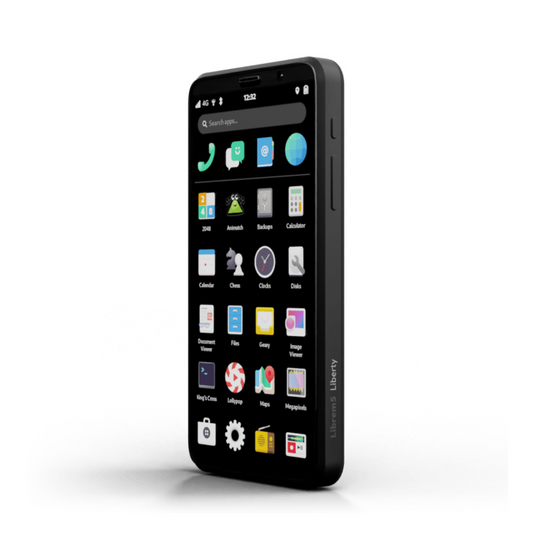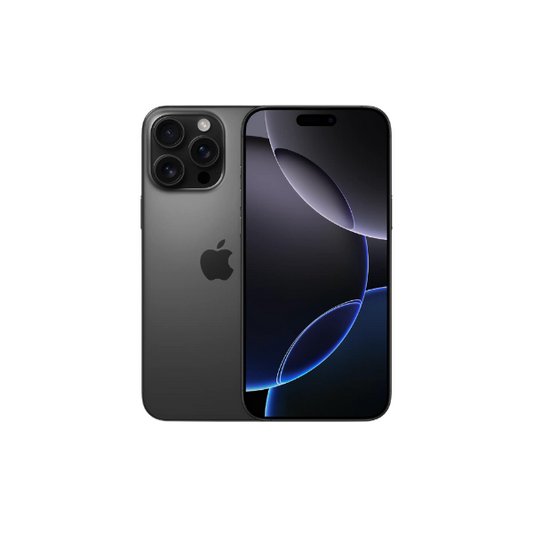Have you ever been frustrated when trying to use your iPhone and the right side of the screen couldn't work? It's a problem that can make you unable to text, call, or use your favorite apps, which can mess up your day. But don't worry; you can try a few things to fix the problem and get your iPhone screen working again. In this article, we'll look at why the right side of your iPhone screen might not work and give you tips on how to fix it. So, let's get started and get your iPhone working again.
Reasons Behind the Right Side of the iPhone Screen Not Working Properly
If the right side of your iPhone screen isn't responding, the following factors could be the reasons:
1) Display Problems Due to Buildup
Display problems may occur if oils, dust, or other substances are present. That can happen if you use your phone regularly with filthy hands or in a dusty environment. If you don't want the buildup to affect your screen's performance, clean it often.
2) Physical Damage to Internal Components
Physical damage to the internal components or the touchscreen can also be the reason behind this issue. Damage to your phone's internal components could affect its functionality if you've dropped it or hit it against something. It may be possible to repair this by exchanging the broken parts.
3) Bugs or System Failures
Bugs or system failures in an old iOS version might cause display issues. There might be issues or faults in the system if you haven't updated your iPhone in a long time. You can resolve these difficulties and enhance your phone's performance by updating to the newest iOS version.
4) Software Faults
Finally, software faults are another possible cause of a faulty right side of your iPhone's display. The issue may have occurred when you updated the software on your phone or installed a new app. If returning to an earlier software version or removing recently installed programs does not resolve the problem, try updating to the latest version.
It is important to find the root of the problem and implement solutions to stop it from happening again. Seek the assistance of an Apple technician if the problem persists.
Things to Consider Before Fixing This Issue
There are a few things you should remember before trying the methods of repairing your iPhone's inactive screen so you get the best possible results:
- Charge your iPhone completely before attempting any fixes. Touchscreen problems may be caused by low battery life, so it's crucial to figure that out as soon as possible.
- Get rid of any cases you may have on your device. Like screen protectors, they may interfere with the touchscreen's responsiveness in certain situations.
- Before looking for additional solutions, try resetting your iPhone. Simply powering down and rebooting the device can solve many problems.
- Don't use anything too abrasive or chemically strong to clean the screen. The screen may crack permanently, and the oleophobic layer may be lost.
- The screen may freeze if too many applications are running in the background. In this scenario, closing all applications can be the solution. You can simply clear the app history to make it work again.
- Reach out to the experts if you feel uneasy about doing repairs yourself. They can find the problem and fix it without causing any additional harm to your gadget.
Top 8 Ways to Repair the Iphone’s Right Screen
1) Use an Ios System Repair Tool
Looking for an effective way to fix problems with iOS? iMyFone Fixppo is the only app you need. This strong iOS system repair tool is the best way to fix and restore your iPhone or iPad functioning. Fixppo is made to fix all iOS problems, even ones that make the screen unusable, and has a 100% success rate. That makes it the best repair tool on the market, and you can quickly and easily download it to your computer. To fix it, just do these simple things:
- Open Fixppo and choose "Standard Mode." Connect your iPhone to your computer and click "Next."
- If your iPhone doesn't show up immediately, follow the on-screen instructions to turn on DFU/Recovery mode.
- Click "Download" to get the update once your device is turned on.
- Click "Start" once the code has been downloaded to start the repair process. Hold on to your iPhone until the process is done.
And that's it; you're done! Your iPhone is as good as new, and nothing of your data has been lost. Fixppo also works with all versions of iOS, so even the latest iPhone 14 can use it. Plus, it's very simple to use. With just a few clicks, you can fix your device in minutes. Download the trial version for free today to see how easy it is to fix and recover your device with this tool.
2) : Altering 3D Touch Settings
Changing 3D Touch settings lets you use your iPhone again. You can do it using this step-by-step guide:
- Go to the Accessibility section in your iPhone's Settings app.
- A "3D Touch" toggle appears at the top of the display. To access the selections, tap it.
- The display has "3D Touch" at the top. Slide the button left to switch off 3D Touch. Please wait a minute, then move the button right to turn it on. That turns off 3D Touch and typically fixes screen issues.
- Try testing the sensitivity levels. You may select "light," "medium," or "firm." Tap each one to test the sensitivity level and see if it changes how your device responds to Touch.
- If the problem persists, turn "Touch Accommodations" on or off. That can modify how 3D Touch works for persons with mobility or cognitive issues.
Method 3: Force Restart Your iPhone
Restarting your device is a simple fix that often works like magic. Here's what you need to do:
For iPhone 8 and Later Models:
- Hold and quickly release the Volume Up button.
- Press the Volume Down button and release it.
- Hold down the start button until you see the Apple logo.
For the iPhone 7/7+:
- Hold power and Volume down buttons until you see the Apple logo.
For iPhone 6 and Earlier Models:
- Hold down the home and power buttons until the Apple sign shows up. Once the Apple sign comes up, release the buttons and let your iPhone start up again.

Method 4: Updating IOS to the Latest
If your iPhone's screen is not responding, restarts independently, or does other annoying things, it's time to update its software. Keeping your device up to date is very important because the latest updates fix bugs and add security patches. Here are three easy steps to update your iPhone OS to the latest version:
- Open the Settings app on your iPhone, and then go to General > Software Update. That will see if there are any new changes for your gadget. For updates, click the "Download and Install" button.
- Ensure your device is connected to a robust wifi network to avoid interruptions during the update process. Downloading the update over cellular data can easily exceed your monthly data limit.
- When connected to a robust wifi network, hit the "Download and Install" button to initiate the update. The download duration is directly proportional to the speed of your internet connection. Therefore, it's advisable to be patient while the download completes.

Once the download is complete, the startup process will kick off automatically. Throughout the process, your device will experience multiple restarts. It might consume an hour or even more. Before you begin the update, ensure your device has sufficient battery life.
Method 5: Reset All Settings
When your device is giving you trouble, changing all settings can be a simple way to fix it. Here's what you need to do:
- Open your device's "Settings" menu and go to "General."
- Scroll to the bottom and click "Reset."
- Tap "Reset All Settings."
- Type in the passcode for your device to complete the move.
- Once the restart is done, set up your device and enjoy a fresh start with your new settings.

Method 6: Restoring iPhone via iTunes in Recovery Mode.
Restoring with iTunes in recovery mode is ideal. Start now by following the given steps:
- Open iTunes and connect your iPhone via USB. We must recover your device while connected. For recovering, follow these simple iPhone model-specific steps:
- iPhone 8 or later (including iPhone 14): turn off and hold the top button until the recovery mode screen appears.
- For iPhone 7 and 7 Plus: turn off your smartphone and hold the Volume Down button until the recovery mode screen appears.
- iPhone 6s or earlier: switch off and hold the Home button until the recovery mode screen shows.

- Click "Restore" to start the restoration process when your device enters recovery mode. Relax as iTunes recovers your iPhone and leaves recovery mode. Congratulations! Your iPhone is restored, and all the issues have been solved.
Method 7: Factory Reset the Device
Try a factory reset if your iPhone screen doesn't respond properly. Remember that this step erases all device data. Thus, a backup is advised before proceeding. Let's follow the steps:
- Open iPhone settings.
- Select "General" next.
- Scroll down and Find the "Reset" window.
- The Reset screen offers several options like "Reset All Settings," "Reset Network Settings," and "Erase All Content and Settings."
- To restore your smartphone, hit "Erase All Content and Settings." When asked, enter your device passcode.
- Just wait for a few minutes, and here it is!

Resetting a gadget might take a few minutes. After the job, you may set up your iPhone as a fresh device or restore it from a backup.
Method 8: Inspect for Hardware Issues
Does every solution fail to fix your device? Don't worry—it may be hardware. Check your device's hardware:
- Examine the device for breaks or dents. Physical damage may harm hardware. Bring your damaged device to an Apple Store immediately.
- Overheating can damage the hardware. Cool down your iPhone if it's too hot.
- Battery difficulties can damage the hardware. A bad battery may cause your gadget to deplete fast or not retain a charge.
Hardware issues shouldn't bother you. These easy procedures let you check and fix your gadget quickly.
Conclusion:
To sum up, dealing with an unresponsive right screen on your iPhone can be annoying and leave you feeling helpless. Fortunately, the abovementioned solutions can help you diagnose and fix the issue quickly. No matter what issue you're facing with your Apple device, there's always a solution available to you. You can try the one that suits you best. We hope this article has provided valuable insights and practical solutions to tackle any screen-related problems you might have faced. Enjoy your iPhone experience, and kindly share your thoughts in the comment section below.
FAQs
What are some steps I can take to address a malfunctioning iPhone screen?
To troubleshoot the issue, try restarting your iPhone or iPad, cleaning your screen of debris or water, and disconnecting any accessories connected via Lightning or USB-C. If the screen functions properly after disconnecting an accessory, consider using a different outlet, cable, or charger.
What is the common reason why my phone is not powering on?
There are various reasons why your phone may not turn on, including battery malfunction or software glitches. However, common problems include a depleted battery, which can cause unresponsiveness on your phone.






